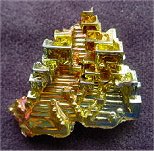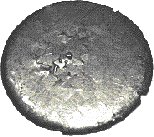 Discovery Information Discovery Information |
| Who: Known to the ancients. |
|
 Name Origin Name Origin |
| German: wissmuth (white mass). |
|
 Sources Sources |
| It can be found free in nature and in minerals like bismuthine (Bi2O3) and in bismuth ochre (Bi2O3). Canada, Bolivia, Japan, Mexico and Peru are major producers. |
|
 Uses Uses |
| Main use is in pharmaceuticals, low
melting point
alloys, fuses, sprinklers, glass, ceramics and as a catalyst in rubber production. Strong permanent magnets can be made from the alloy "bismanol" (MnBi). In the early 1990s, research began to evaluate bismuth as a nontoxic replacement for lead in various applications |
|
 Notes Notes |
| Among the heavy metals, bismuth is unusual in that its toxicity is much lower than that of its neighbors in the periodic table such as lead, thallium and antimony. |
| In the early 1990s, research began to evaluate bismuth as a nontoxic replacement for lead in various applications. |


 Discovery Information
Discovery Information Name Origin
Name Origin Sources
Sources Uses
Uses Notes
Notes Images
Images

